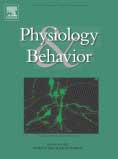Pheromonal Influences on Sociosexual Behavior in Young Women

Click here to read full study with tables and references
INTRODUCTION BY DR. CUTLER
"This elegant scientific study of Athena Pheromone 10:13™ in college women at San Francisco State University by Drs. Norma McCoy and Lisa Pitino demonstrated that 10:13 increased the sexual attractiveness for 74% of the women. Dr. McCoy established first a two week baseline period and then had each volunteer keep careful diaries of their sociosexual behaviors. Importantly, each woman's results were compared to her own individual baseline values. Understandably, Dr. McCoy's published study garnered substantial national media attention due to her established credentials and the rigor of the study's execution."
********
Copyright ©2002 Elsevier Science Inc.
Norma L. McCoy, Lisa Pitino.
Dept. of Psychology, San Francisco State University, San Francisco, CA 94132-4168
Independent study published in the scientific journal, Physiology and Behavior 75 (March 2002) 367-375
Click here to read full study with tables and references
ABSTRACT
A double-blind, placebo-controlled study of a synthesized putative female pheromone was conducted with regularly menstruating, university women (N = 36, mean age = 27.8). The pheromone formula was derived from earlier work investigating the underarm secretions of fertile, sexually active, heterosexual women.
A vial of either synthesized pheromone or placebo was selected blindly and added to a subject's perfume. Subjects recorded seven sociosexual behaviors and reported them weekly across three menstrual cycles. Beginning with Day 8 of each cycle, the first cycle contained a 2-week baseline period followed by an experimental period of as many as 3 weeks each from the next two cycles for a maximum of 6 weeks.
The 19 pheromone and 17 placebo subjects did not differ significantly in age, weight, body mass index, dating status or ethnicity nor in reported accuracy, back-filling data, perception of a positive effect or perfume use. Placebo subjects were significantly taller than pheromone subjects. Except for male approaches, subjects did not differ significantly at baseline in average weekly sociosexual behaviors.
A significantly greater proportion of pheromone users compared with placebo users increased over baseline in frequency of sexual intercourse, sleeping next to a partner, formal dates and petting/affection/kissing but not in frequency of male approaches, informal dates or masturbation. Three or more sociosexual behaviors increased over baseline for 74% of pheromone users compared with 23% of placebo users.
We conclude that this synthesized pheromone formula acted as a sex attractant pheromone and increased the sexual attractiveness of women to men.
2002 Elsevier Science Inc. All rights reserved.